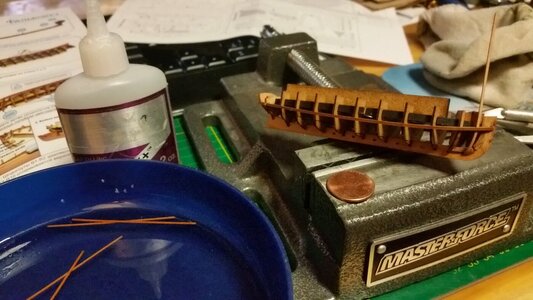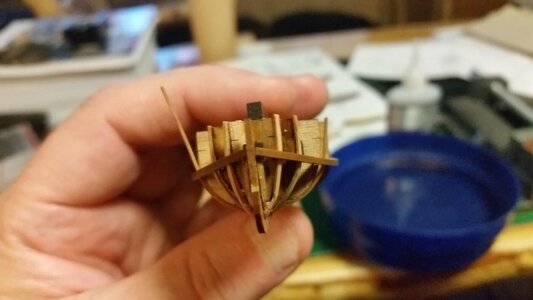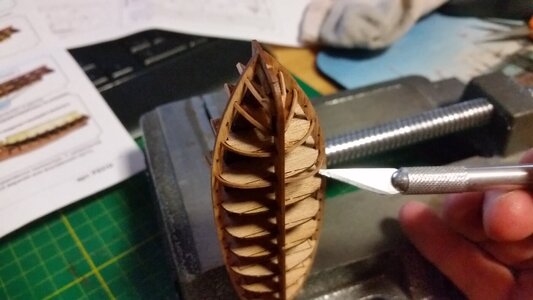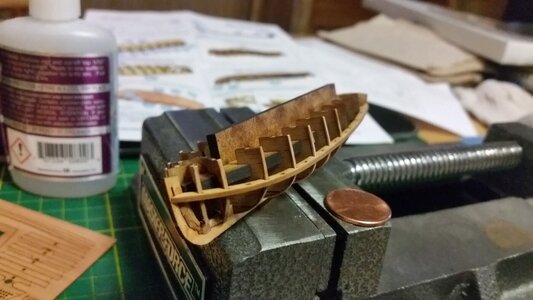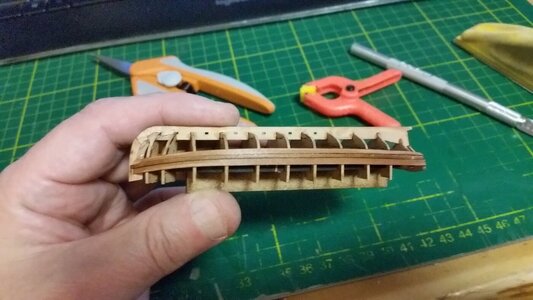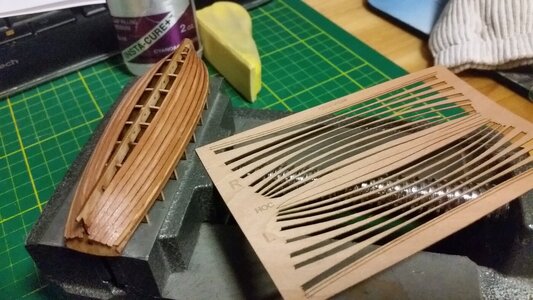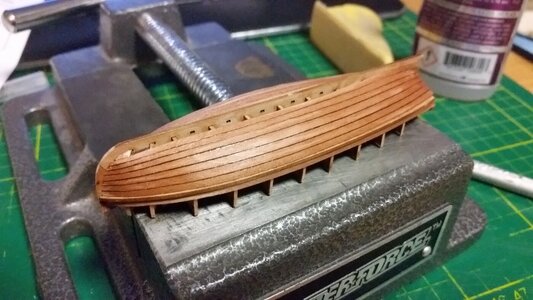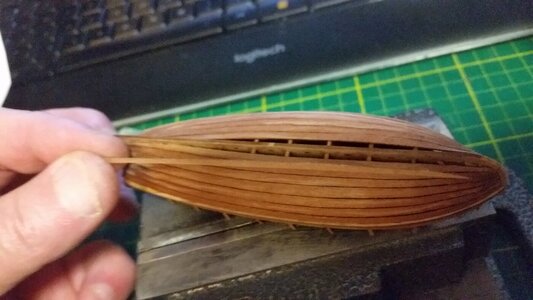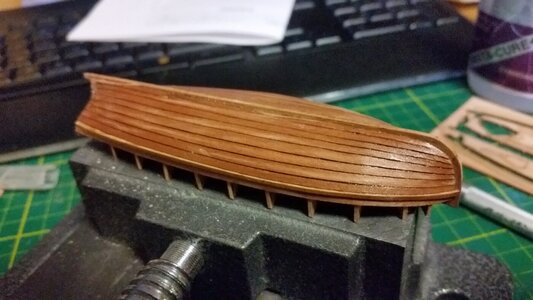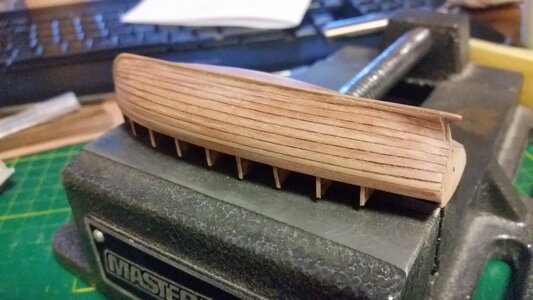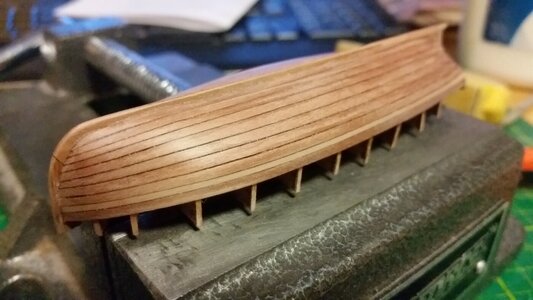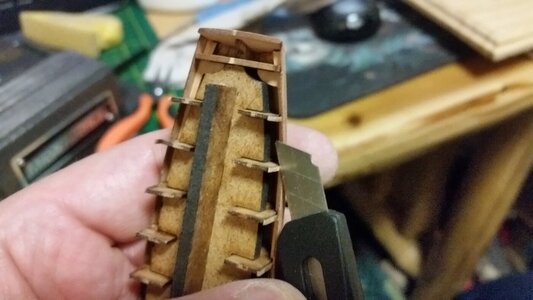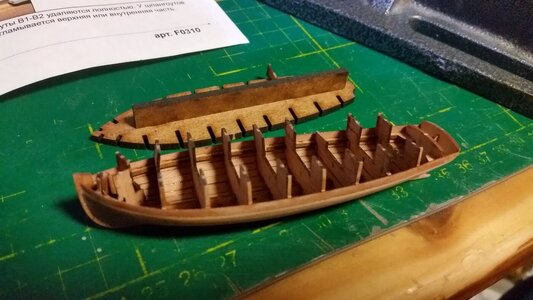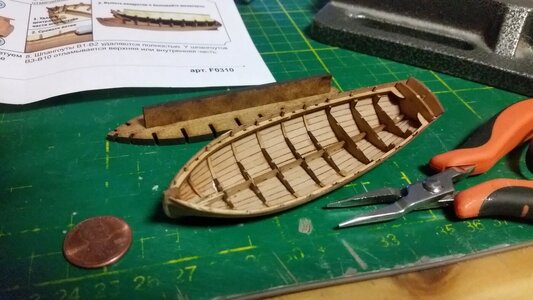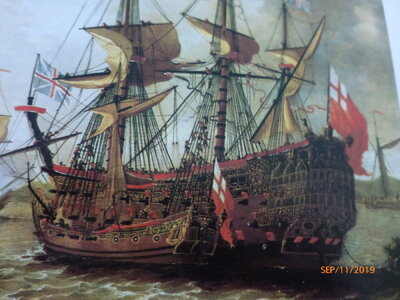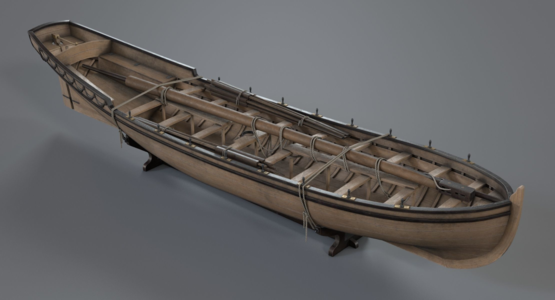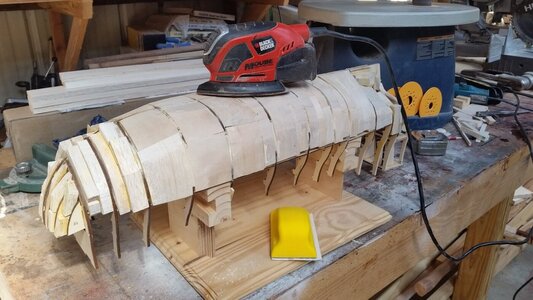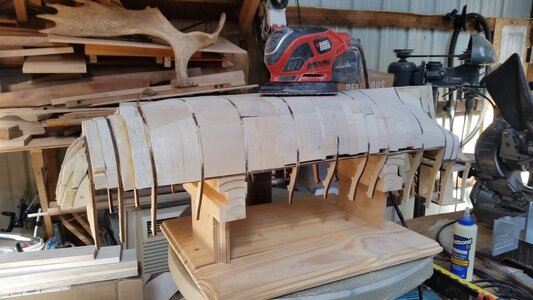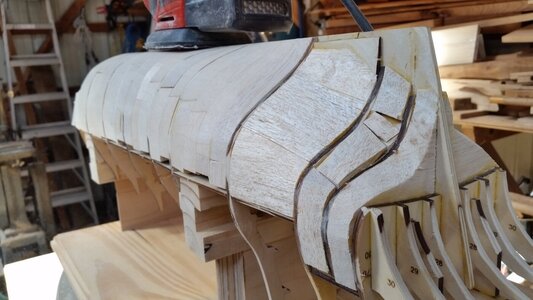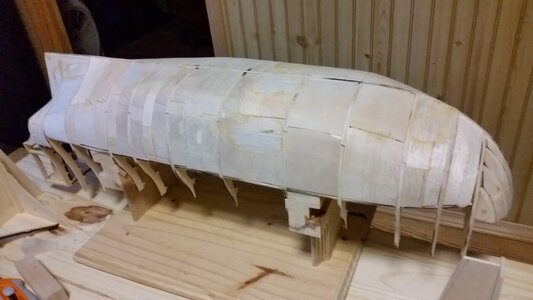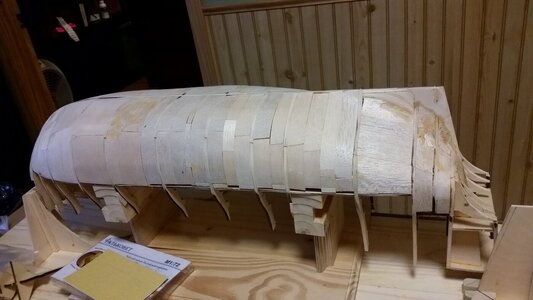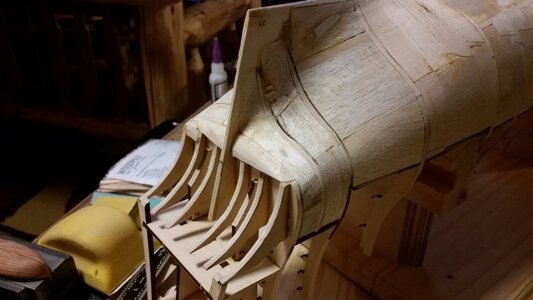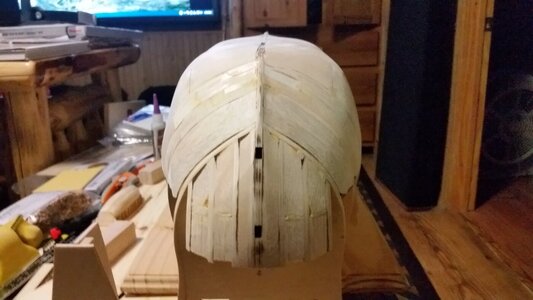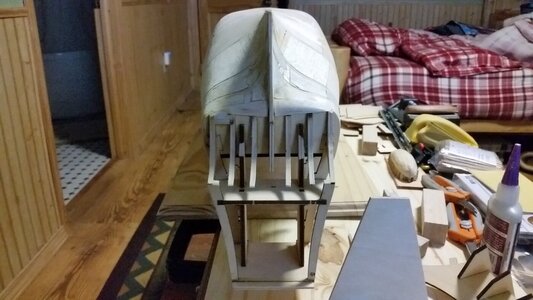Work on the Sovereign is going to be slow to nonexistent for the next two months due to work. Today I was able to spend several hours adding more balsa blocks to the hull. I can't wait to see how nice the hull form will be once it's shaped by sanding. The white duct tape is pulling a bent frame inboard, into shape to match the other side because it was slightly warped. One more parts are added in that area, like false decks, the frame will be forced into in the proper position and locked down before planking begins.
Before this stage, it's important to look from the stern forward and from the bow aft to see if there is any twist in the keel or framed out of alignment. The keel looks straight now, and the twist in the bow that was found earlier was corrected a while ago with glued reinforcement blocks combined with clamps to twist the bow at the first two frames into alignment with the rest of the hull.
When fixing a twist, the entire hull acts similar to a long coil spring, and a certain amount over over correction should be used when gluing reinforcements until the glue dries. If your estimate of over twisting the hull past straight is correct, the hull will untwist once all restraints are removed and rest at a perfectly straight alignment. The balsa blocks between the frames anchor the hull into shape, so you better have things aligned before the filler blocks are added or the twist will become permanent.
It may appear like I am setting up the stern for a square tuck. Not so. I will be rounding all that balsa over to create a demi-round tuck, with sharp edges forming at the transition between transom and side planking remaining sharp only down to the water line, exactly like the Lely painting of Peter Pett.
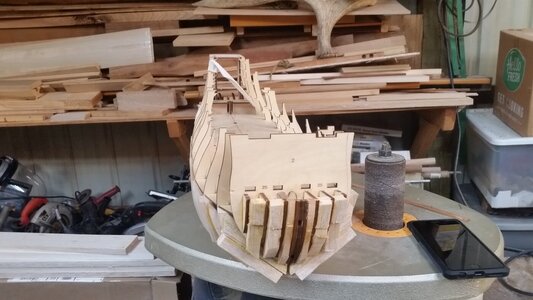
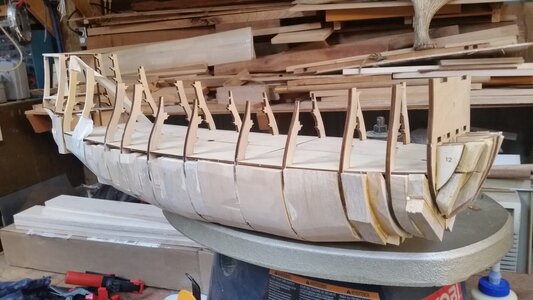
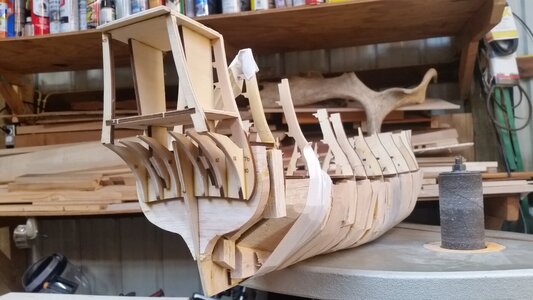
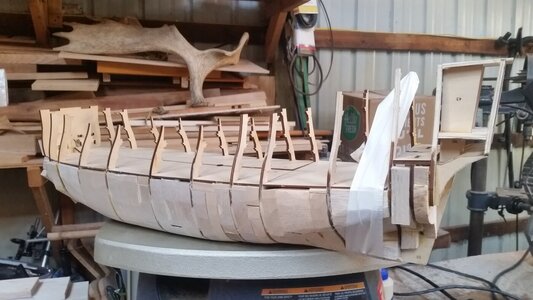
Before this stage, it's important to look from the stern forward and from the bow aft to see if there is any twist in the keel or framed out of alignment. The keel looks straight now, and the twist in the bow that was found earlier was corrected a while ago with glued reinforcement blocks combined with clamps to twist the bow at the first two frames into alignment with the rest of the hull.
When fixing a twist, the entire hull acts similar to a long coil spring, and a certain amount over over correction should be used when gluing reinforcements until the glue dries. If your estimate of over twisting the hull past straight is correct, the hull will untwist once all restraints are removed and rest at a perfectly straight alignment. The balsa blocks between the frames anchor the hull into shape, so you better have things aligned before the filler blocks are added or the twist will become permanent.
It may appear like I am setting up the stern for a square tuck. Not so. I will be rounding all that balsa over to create a demi-round tuck, with sharp edges forming at the transition between transom and side planking remaining sharp only down to the water line, exactly like the Lely painting of Peter Pett.








